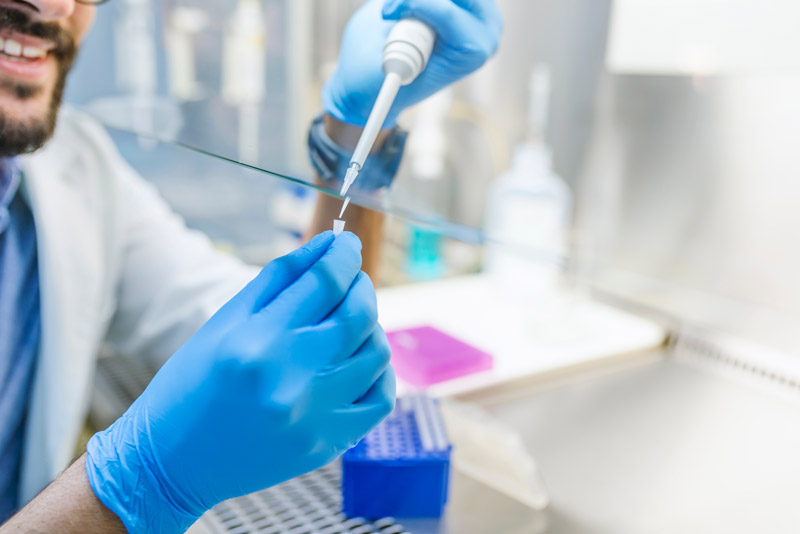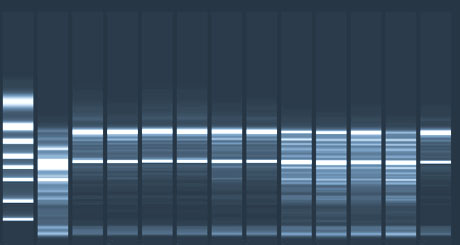Types of DNA sequencing
Overview
There are many methods of sequencing DNA, each appropriate for specific applications. Applications of sequencing might include genotyping, gene or variant discovery, detecting CRISPR editing events, screening, or epidemiology.

DNA sequencing definition
Sequencing DNA determines the order of bases, adenine (A), thymine (T), cytosine (C) and guanine (G), in a molecule of DNA.
DNA sequencing example
DNA sequencing can be performed using PCR, Sanger sequencing, shotgun sequencing, or next generation sequencing.
PCR
PCR is the cheapest and easiest method of DNA sequencing but is only practical for genotyping. Primers that are complementary to the desired genotype are used to perform PCR. PCR makes copies of the sequence until the sequence copies are visible on an agarose gel (Figure 1). After gel electrophoresis, the presence of a band in a specific location on the gel indicates the desired genotype. PCR performed in this way is qualitative. Digital PCR (dPCR) can quantify the absolute number of copies of a target genomic or complementary DNA (cDNA) from a sample.
Capillary electrophoresis
A technique called capillary electrophoresis can also sort the DNA molecules by size and determine the sequence. The solution is placed into a capillary, and, like gel electrophoresis used in PCR genotyping, an electrical current is applied which pulls the charged DNA molecules through an electrolyte buffer solution. Larger molecules move through the gel slower than smaller molecules, resulting in a clear size distribution. At the end of the capillary, a detection device identifies DNA molecules using fluorescent tags or by UV absorbance. This information is used to graph the concentrations of amino acids in the sample to determine the DNA sequence.
Sanger sequencing
Sanger sequencing is also called the chain-termination method. Fluorescent dye to distinguish the deoxynucleotides enables running the sequencing in a single reaction rather than 4 separate reactions. Using a DNA template and primers, among other reagents, each of the standard deoxynucleotides are added to 4 separate reactions. The sequences are denatured and sorted by size before gel electrophoresis.
Automation greatly increased the speed at which Sanger sequencing can be performed, but this method is still limited to 384 samples per run and typically has lower quality at the beginning and end of sequences. Sanger sequencing is also limited to 300–1000 nucleotide sequence lengths.
Shotgun sequencing
Shotgun sequencing can handle sequences longer than 1000 nucleotides. This method incorporates Sanger sequencing after breaking the sample DNA up into more manageable lengths. After Sanger sequencing the smaller sequences, the fragmented sequences are reassembled like a puzzle to form the longer sequence. Due to the nature of the reassembly step, shotgun sequencing struggles with repeat sequences.
Next generation sequencing
Next generation sequencing improved upon shotgun sequencing by sequencing in parallel. There are many kinds of next generation sequencing approaches. Sequencing by synthesis identifies nucleotides using fluorescence as they are added to sequence chain. As each fluorescent nucleotide is added to the chain, the signal emitted is used to identify it.
Adapters added to the end of the chain allow multiplexing, sequencing multiple samples in the same reaction. Sequencing in parallel gives next generation sequencing the advantage of scalability and saves time and resources.
For more information, read our DECODED article, What is next generation sequencing?
NGS 101 application guide
This detailed overview walks you through major advances in sequencing technology, types of next generation sequencing, their applications and more.
